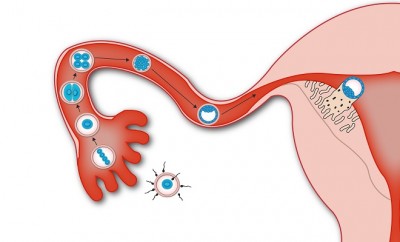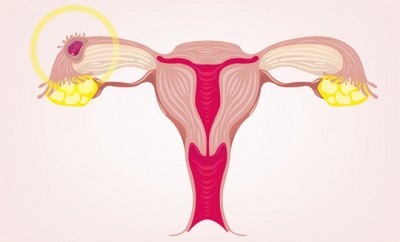What does Spotting Look Like? Causes and Possible Types of Spotting
Causes of spotting may be physiological (normal) and pathological.
Menstruation, ovulatory bleeding, spotting during accommodation to various types of oral contraceptives and implantation bleeding fall into the first category. Pathological bleeding may or may not be associated with pregnancy. All anomalous discharge out of the cycle, as well as heavy periods or even the slightest spotting during pregnancy constitute sufficient ground for a clinical investigation.
Physiological spotting and what it looks like
There are several physiological and quite a few pathological causes of spotting. The first group includes:
- Menstruation;
- Ovylatory bleeding (OB);
- Spotting during accommodation to hormonal contraceptives;
- Implantation Bleeding (IB).
Menstruation is the natural process of rejection of endometrium (uterine mucous lining), which takes place on a monthly basis. The case is that endometrium regularly prepares itself for pregnancy and in case implantation does not occur, it dies away and discharges through vaginal spotting. Menstrual discharge may have various intensity and coloring. As a rule, it constitutes average or large amount of scarlet or dark-red blood, possibly with clots. Intensity of the discharge eventually reduces and on average it lasts about a week. In reality, properties of menstrual blood depend on the woman’s age, presence or absence of physical exertion, and even on weather: Bleeding is more intense at a young age; the amount of discharge increases in case of being overloaded; in winter all physiological processes take a less active course.
Ovulatory bleeding may be observed in the middle of the cycle, unlike a period, which marks its beginning and is a regular process. Normally, ovulatory bleeding has the form of dark-brown spotting on the underwear, and it lasts for no more than 2-3 days.
Mid-cycle spotting in the period when a woman’s organism is being accommodated to taking hormonal contraceptives is very similar to OB. Such intermenstrual bleeding is conditioned by the accommodation of a woman’s organism to a lower dose of hormones than their natural level assumes.
Implantation bleeding is a result of endometrial vessels’ affection due to the ovum’s invasion into the uterine mucous lining. Both OB and IB are a moderate phenomenon, which have the form of dark-brown spots on the underwear or a pink lymph (especially OB, which is heavily diluted with mucus). They last for no more than 3 days.
It is required to see a doctor in case OB, IB or discharge, caused by intake of contraceptives, linger, eventually intensify or are accompanied by faintness and poor health.
Pathological bleeding and what it looks like
Anomalous bleeding may or may not be related to pregnancy and it can occur regardless of the menstrual cycle.
Pathologies, associated with fertilization involve disturbance of a normal uterine pregnancy, ectopic pregnancy or hidatidiform mole (development of the ovum without an embryo). Experiencing bleeding at any term of the assumed or defined pregnancy, you should immediately consult a gynecologist. All these conditions are life-threatening and require immediate hospitalization.
Conditions that are not related to pregnancy:
- Sexually transmitted diseases;
- Various hormonal disruptions (polycystic ovaries, thyroid pathologies, etc.);
- Intake of certain medicaments, specifically those, which affect coagulability;
- Endometriosis – proliferation of endometrium out of the uterine cavity;
- Adenomyosis– invasion of endometrium into the muscular wall of the uterus;
- Coagulability disorders;
- Polyps, erosions, cervical or vaginal cancer;
- Uterine neoplasms, including myomas and fibromyomas.
These types of bleeding have many different forms, from spotting (dark, black spots on the underwear) during chronic endometrial pathologies, to profuse bleeding in case of pregnancy disorders. Bleeding in case of sexually transmitted diseases may contain various impurities, it can be sticky, have an unpleasant smell and even a greenish coloring (mixture of blood and matter). In case of hormonal disruptions, as well as some oncological diseases, constant and unsystematic brown “spotting” is observed, along with cyclic irregularities.
In a number of cases, even the most thorough diagnostics does not allow to accurately establish the causes of spotting. This is when we can consider dysfunctional uterine bleeding, which most often occurs in the period of hormonal alteration – at a young age and prior to the menopause.
In any case, any type of “unidentified,” bleeding that occurs “out-of-schedule”, as well as a period with great intensity and duration of more than 7 days is a considerable reason for visiting a doctor to find out the actual cause of disruption in your organism.














